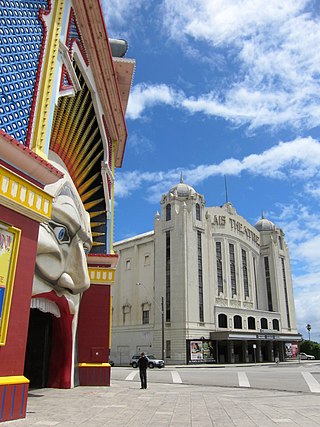
St Kilda is an inner seaside suburb in Melbourne, Victoria, Australia, 6 km south-east of the Melbourne central business district, located within the City of Port Phillip local government area. St Kilda recorded a population of 19,490 at the 2021 census.
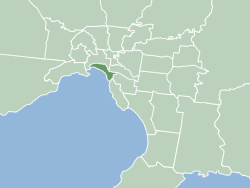
The City of Port Phillip is a local government area of Victoria, Australia on the northern shores of Port Phillip, south of Melbourne's central business district. It has an area of 20.7 km2 and had a population of 113,200 in June 2018.

Port Melbourne is an inner-city suburb in Melbourne, Victoria, Australia, 3 km (2 mi) south of the Melbourne central business district, located within the Cities of Melbourne and Port Phillip local government areas. Port Melbourne recorded a population of 17,633 at the 2021 census.

St Kilda East is a suburb in Melbourne, Victoria, Australia, 6 km south-east of Melbourne's Central Business District, located within the Cities of Glen Eira and Port Phillip local government areas. St Kilda East recorded a population of 12,571 at the 2021 census.
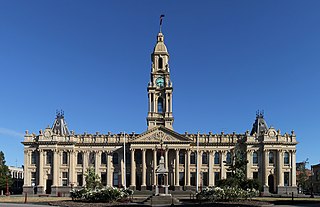
South Melbourne is an inner suburb in Melbourne, Victoria, Australia, 3 km south of Melbourne's Central Business District, located within the City of Port Phillip local government area. South Melbourne recorded a population of 11,548 at the 2021 census.
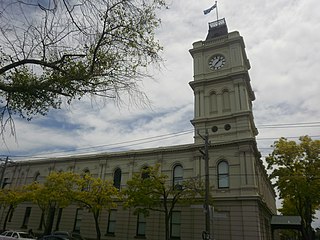
Brighton is a suburb in Melbourne, Victoria, Australia, 11 km south-east of Melbourne's Central Business District, located within the City of Bayside local government area. Brighton recorded a population of 23,252 at the 2021 census.

St Kilda Road is a street in Melbourne, Victoria, Australia. It is part of the locality of Melbourne which has the postcode of 3004, and along with Swanston Street forms a major spine of the city.
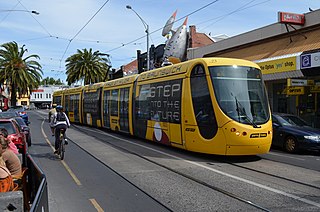
Acland Street is a street in the Melbourne suburb of St Kilda, which enjoys great popularity as a recreational area, mainly due to its many restaurants and its proximity to the entertainment areas along St Kilda beach
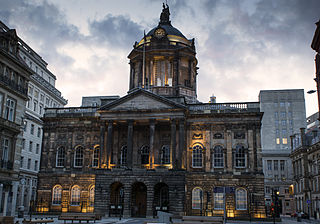
Liverpool Town Hall stands in High Street at its junction with Dale Street, Castle Street, and Water Street in Liverpool, Merseyside, England. It is recorded in the National Heritage List for England as a designated Grade I listed building, and described in the list as "one of the finest surviving 18th-century town halls". The authors of the Buildings of England series refer to its "magnificent scale", and consider it to be "probably the grandest ...suite of civic rooms in the country", and "an outstanding and complete example of late Georgian decoration".

Balaclava is an inner suburb in Melbourne, Victoria, Australia, 7 km south-east of Melbourne's Central Business District, located within the City of Port Phillip local government area. Balaclava recorded a population of 5,392 at the 2021 census.

South Melbourne Town Hall is a landmark civic building located on Bank Street in South Melbourne, a suburb of Melbourne, Victoria, Australia. It is listed on the Victorian Heritage Register as of state heritage significance to Victoria.

The Port Melbourne Town Hall was erected in 1882. The Town Hall is an important element in the historic Bay Street streetscape of inner city Port Melbourne.
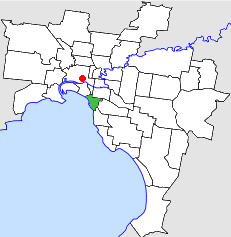
The City of St Kilda was a local government area on Port Phillip, about 5 kilometres (3.1 mi) south of Melbourne, the state capital of Victoria, Australia. The city covered an area of 8.70 square kilometres (3.36 sq mi), and existed from 1855 until 1994.

The Lady of St Kilda was a schooner which served from 1834 before being shipwrecked off Tahiti shortly after 1843.
St Kilda Library is a public library in Melbourne, Australia. The library is located in the suburb of St Kilda, in the City of Port Philip. The building was recognised by the Australian Institute of Architects as one of the “notable public buildings” designed by award-winning architect Enrico Taglietti.
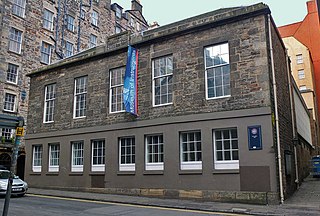
St Cecilia's Hall is a small concert hall and museum in the city of Edinburgh, Scotland, in the United Kingdom. It is on the corner of Niddry Street and the Cowgate, about 168 metres (551 ft) south of the Royal Mile. The hall dates from 1763 and was the first purpose-built concert hall in Scotland. It is a Category A listed building.
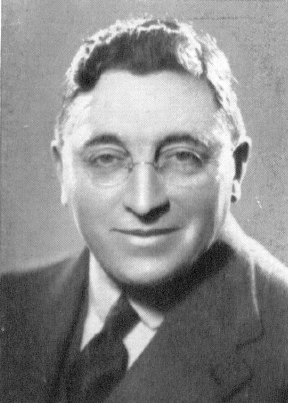
Joseph Plottel was a British born architect who was active in Melbourne, Australia between 1911 and World War II, working in a range of revival styles, as well as Art Deco in the 1930s. He is best known for the St Kilda Synagogue (1927) and the Footscray Town Hall (1936).

St Andrew's Brighton is the oldest continuous Anglican church in Victoria, Australia. St Andrew's is the Anglican parish church of the beachside suburb of Brighton, Melbourne.

Johannesburg City Hall is an Edwardian building constructed in 1914 by the Hawkey and McKinley construction company. The plan for the building was drawn in 1910 and construction was started in 1913 and finished in 1914. The Gauteng Provincial Legislature currently occupies the building. The City Hall has seen many political events on its steps from protest meetings to a bomb blast in 1988.
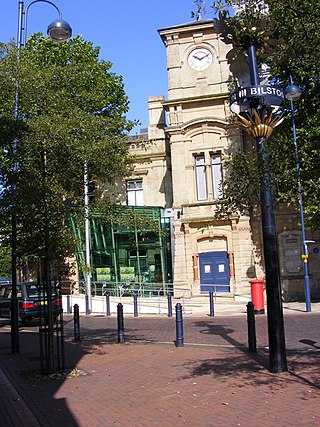
Bilston Town Hall is a municipal facility in Church Street, Bilston, West Midlands, United Kingdom. It is a Grade II listed building.



















